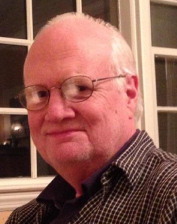In spring 2014, Taylor & Francis organized a seminar held in Washington, D.C. that addressed some of the ongoing issues related to unrestricted access and unrestricted reuse, known as Open Access, to peer-reviewed research and the resultant effect on society in terms of impact and engagement. I was asked to present the context of OA for College Art Association and specifically on CAA's engagement of its public, including the realm of online publishing.
CAA has a long and distinguished history as a resource provider, communicator, and convener to its members which now number some 13,000 visual arts professionals and schools of higher learning. It publishes three, online, scholarly journals – The Art Bulletin, Art Journal, and caa.reviews – which address art history and theory, contemporary art practice, as well as book and exhibition reviews. It hosts annual conferences for faculty art historians and artists, students, critics, educators, and independent scholars. And, it provides a range of resources for the field, including career development and advocacy on national and international subjects to members and the general art public.
Broadly speaking, engagement is an activity and an objective which CAA embraces on many levels … in its annual conferences, cultivation of new members, advocacy efforts, and communications, such as its publications and resource documents. CAA's mission is not merely to impact the field but to engage it. In publishing terms, engagement is the wider view of impact that includes societal, economic, policy, and practice components. It occurs when published information, often enabled by OA, becomes more than something read but something shared, interactive, and collaborative.
CAA recently formed a partnership with Taylor & Francis that provides for the first time two online CAA quarterly journals, The Art Bulletin and Art Journal, as a benefit of membership, and one born-digital publication, caa.reviews. Our journals can now be accessed with embedded links and digital functionalities for enhanced image capabilities, reference searches through sophisticated metadata, and audio and visual selections that offer the reader a richer understanding of content than what was available in print format only.
The association also recognizes the challenges which OA poses to traditional financial models that have been used for decades to support operating costs. At the moment, only caa.reviews is OA; the other two journals remain a benefit of membership. But CAA is eager to participate in the ongoing discussions about sustainability proposals and how OA can become more widely understood and adopted.
With its mission and vision statements in mind, CAA cites, among its goals “improved access to its programs and services for greater engagement and wider participation.” This includes online access to the CAA Directories of Graduate Programs in Art History and Visual Art, its professional Standards and Guidelines used by faculty and administrators at colleges and universities, statistical reports and surveys on the academic workforce, and the use of social media to bring content and people together.
CAA provides resources and tools that strengthen the role of the visual arts in society. We do this through training, conversations, and collaborations among colleagues and institutions to share information with a national and international audience. Scholarship is ultimately best served through the exchange of ideas in open forums, and OA is both a principled and pragmatic means to achieve this.
Additional information
Notes on contributors

Michael Fahlund
Michael Fahlund is Deputy Director of College Art Association, a position he has held since 2005. Previously, he served in both public and private art institutions, including the Carnegie Museum of Art (Pittsburgh) as Assistant Director and the Detroit Institute of Arts as Associate Director of Development and Director of Centennial Affairs. Mr Fahlund earned his BA degree cum laude from Vassar College and two MA degrees, one in music composition and one in information management, from the University of California, Berkeley. He is a recipient of the W. K. Rose Scholarship (Vassar College), the Alfred Hertz Memorial Fellowship (UC, Berkeley), and a Fulbright Hayes Fellowship for study in Rome.
Michael Fahlund, Deputy Director, College Art Association, New York, NY. October 2014.

